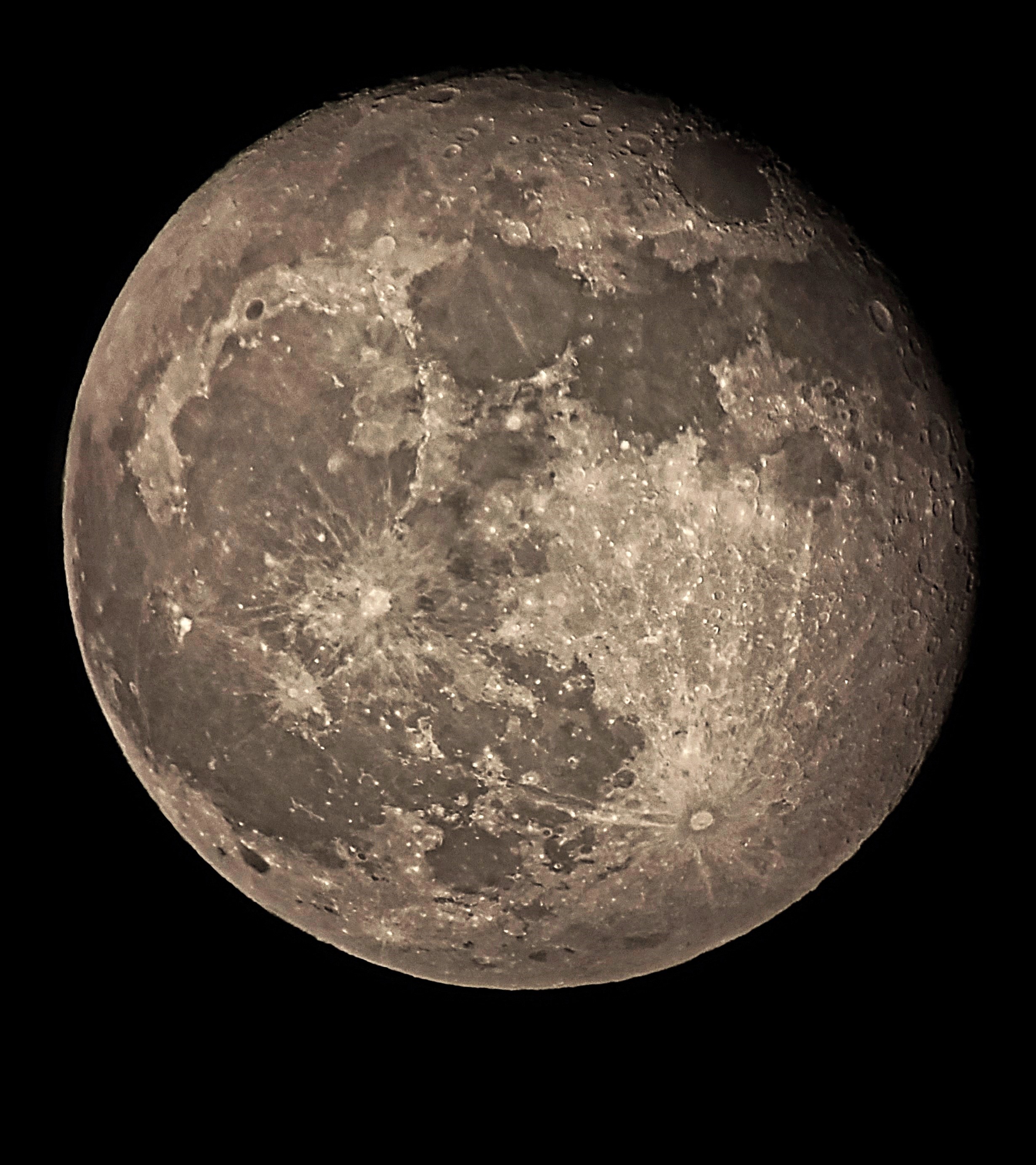
Astrophotography 2024
December 2024 :
August and October 2024 were full of activity, astronomically speaking, with aurora, the comet, and the Super Moon. The weather was favorable for observing, outreach events, AstroAssembly, and astrophotography. To start, River Bend Farm observing on 8-16-24, turned out to be a good night. Brianna Drew from Uxbridge, MA, took this beautiful image of the waxing gibbous Moon which was at 88% illumination and at a distance of 235,997 miles. It was taken through my Orion 80 mm ED Apochromatic refractor with her iPhone attached to a 9 mm Televue Nagler eyepiece.

I took a shot of the Moon on 8-20-24 from my backyard in Killingly, CT. Here is my setup using the same equipment. The phone camera holder is a Tridaptor. It is a high quality adapter that will work with most smart phones and with eyepieces up to 2.4 inches in diameter. It is made out of machined aluminum with an anodized finish. It is able to adjust in all 3 axes ( x,y,z ) and is very stable and precise.

This is a waning gibbous Moon, 99% illumination at a distance of 226,728 miles.
Settings: Pro Mode, ISO 50, aperture 26 mm, F1.8, 1/350 sec exposure, color corrected and sharpened, taken by John Kocur.
This is the setup.

80 mm Orion Eon with a Moonlite focuser, Meade LXD 75 GOTO mount, GSO diagonal, 9 mm Televue Nagler, Tridaptor smart phone adapter, Btr Power LiFePO4 50 AH battery, a Dewnot heater system, and Samsung S 20 smartphone.

Next up was AstroAssembly, 10-5-24. This image of the Sun was taken at Seagrave Observatory through the same telescope and equipment using a Thousand Oaks solar filter with Kaitlynne Goulette’s iPhone.

This solar activity led to the auroral display on 10-10-24 in Killingly, CT. It was a short duration event which only lasted about 30 minutes. It started at 7:15 PM and hit its’ peak brightness at 7:31 PM then slowly tapered off around 7:45 PM. The aurora still lingered in the Northern sky around Midnight but was not as active or vivid.

The aurora photo was taken with my Samsung S 20 using a photo tripod. Settings were Pro Mode, ISO 125, 13mm aperture, F2.2, 10sec. exposure.
On 10-12-24, I got my first image of comet C/2023 A3 (Tsuchinshan–ATLAS).
It was very low on the horizon. I was able to get a decent shot with less than optimal conditions. Samsung S 20 mounted on a photo tripod. Shot in Night Mode, ISO 3200, 26mm aperture, F1.8, ¼ sec. exposure. Venus is lower left, Arcturus upper right.

Two nights later, 10-14-24, I got an image of it streaking through the clouds with a 15 degree long tail.

Settings: Pro Mode, ISO 400, 26mm aperture, F1.8, 4 sec. exposure.
Next shot was on 10-16-24, 8 sec. exposure. I had to contend with the 98% near full moon.

On 10-20-24, the comet is starting to fade, but the sky is darker. It is setting later.

Taken from my yard with S 20. Settings : Pro Mode, ISO 1600, aperture 26mm, F1.8, 8 sec. exposure.

On 10-21-24, I decided to get a close up shot of the comet with my homemade 8 inch, F6 Newtonian reflector. I used eyepiece projection with the S 20 and Widescan 30 mm eyepiece. Taken from Killingly, CT. , good view of the horizon near my house. Venus is on the left.

Here is the result.

Settings : ISO 1600, aperture 26 mm, F1.8, 4 sec. exposure.
My plan in the near future is to do some deep sky guided and long exposure widefield astrophotography using stacking and post processing techniques.



